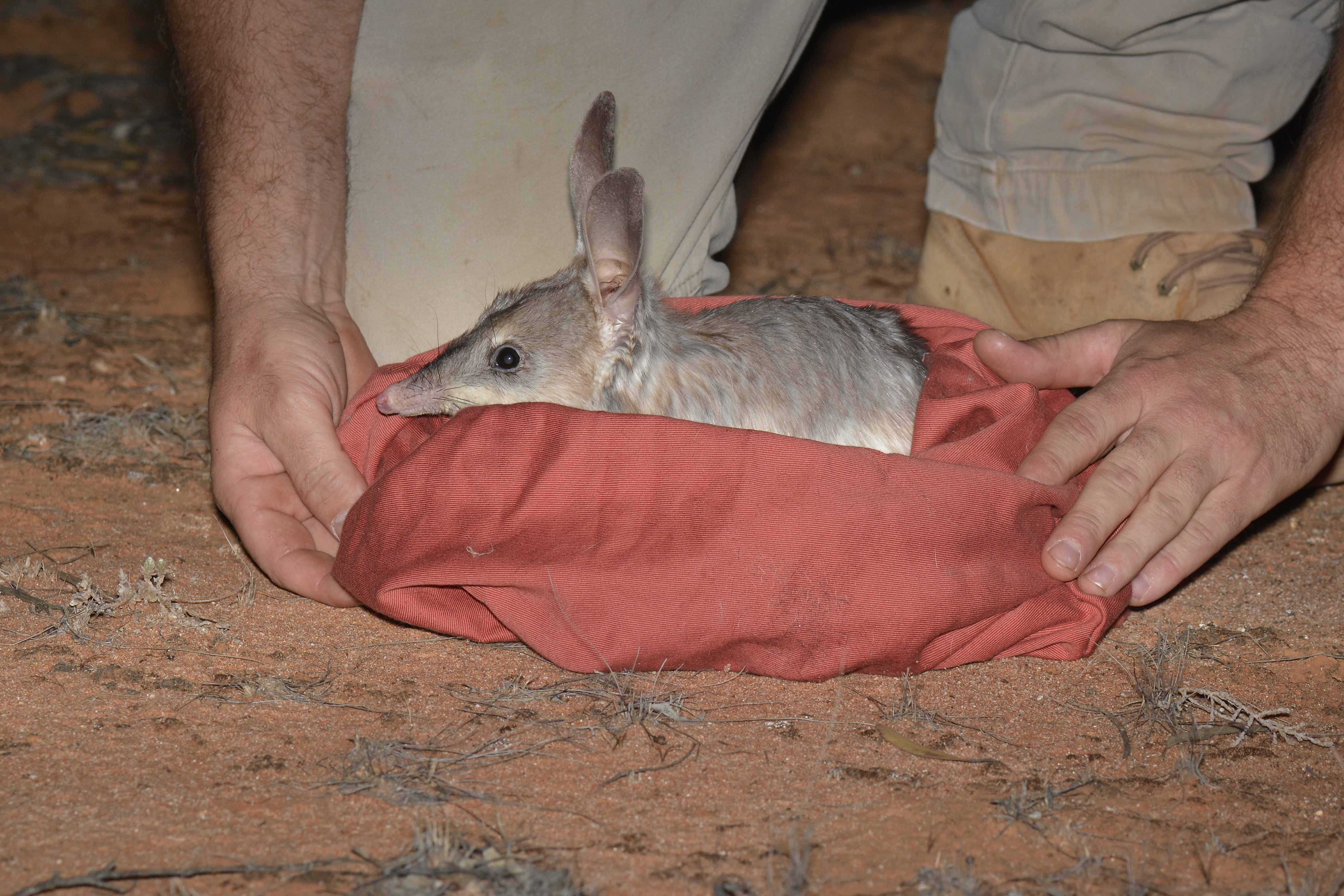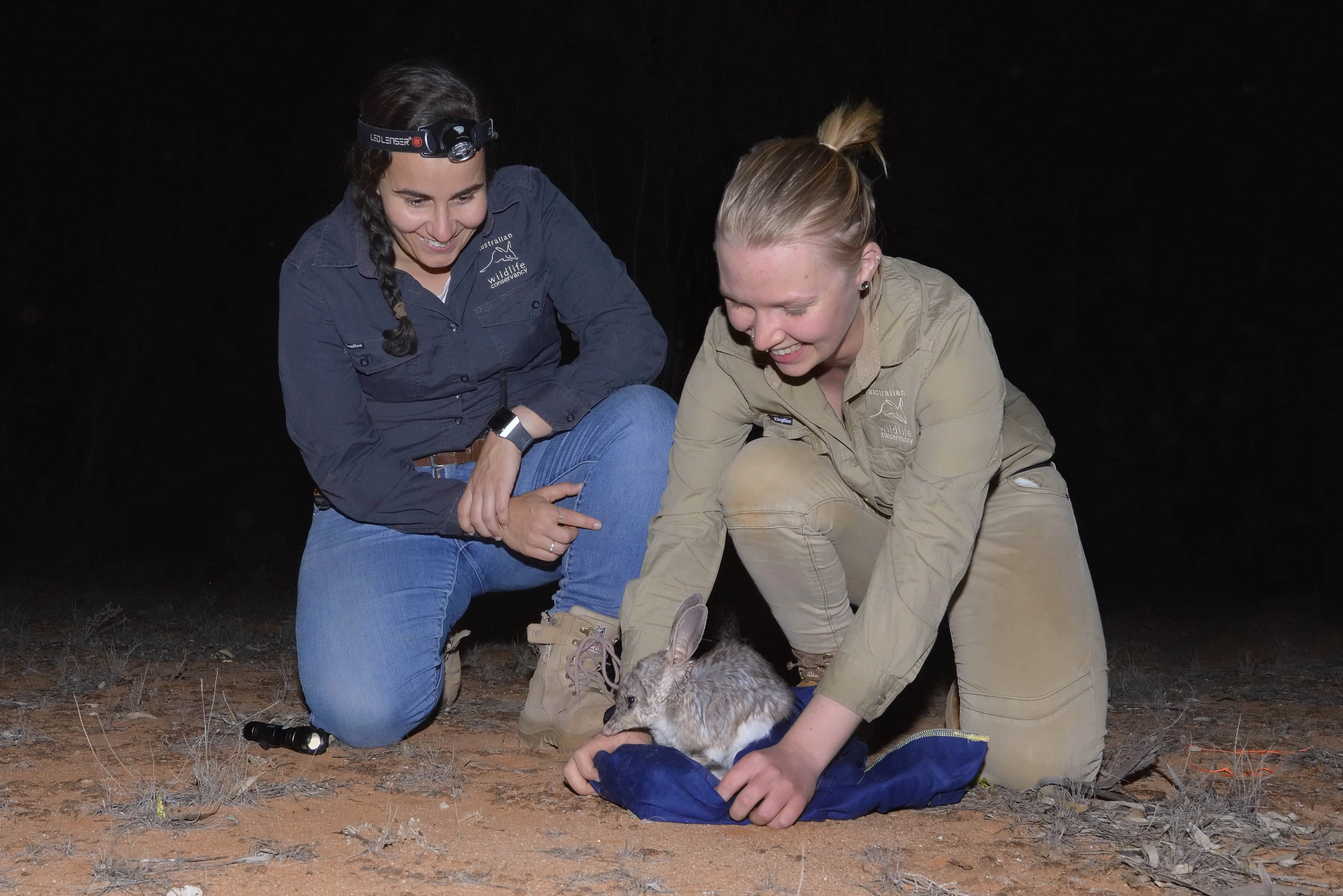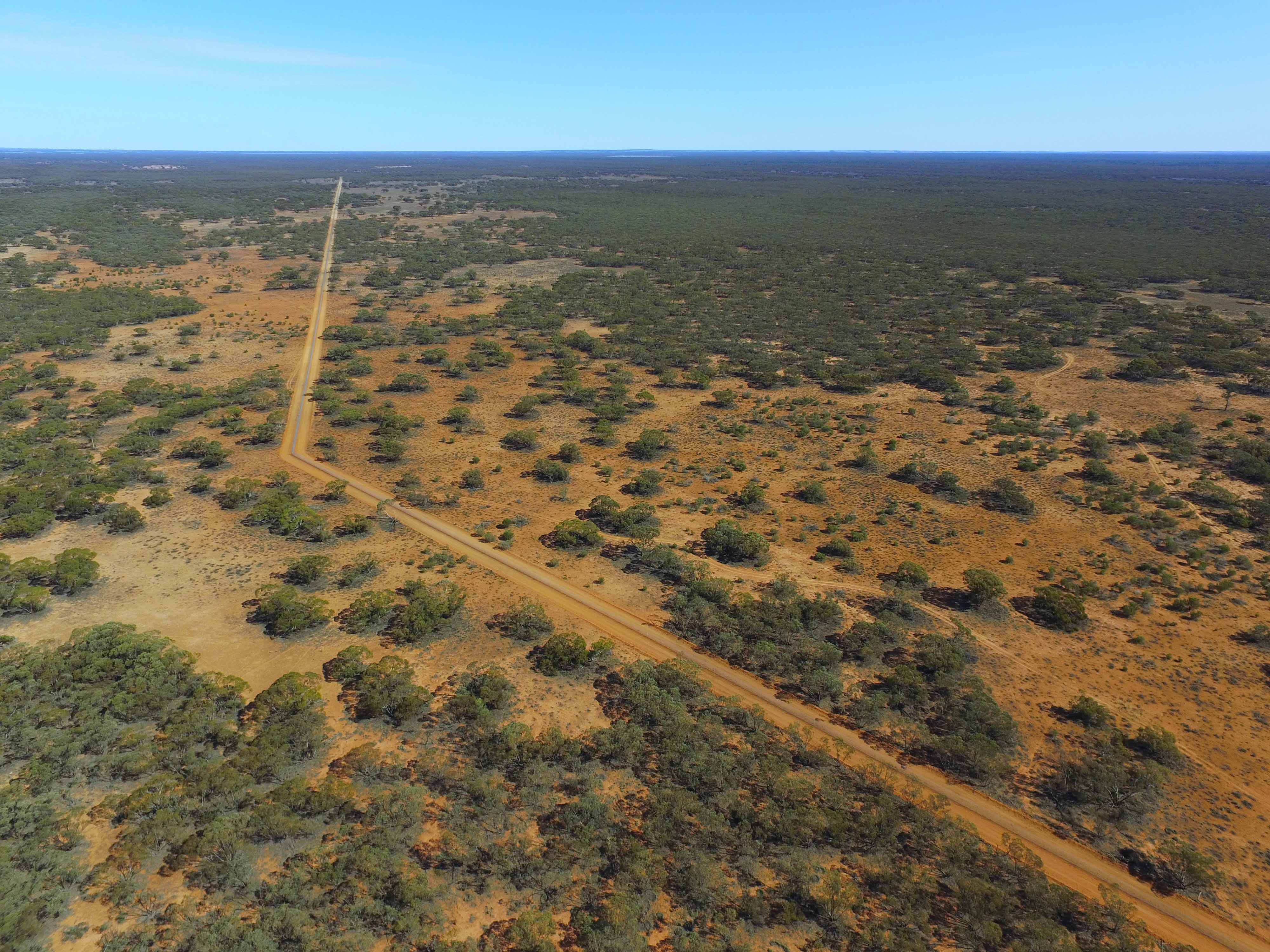Iconic Australian mammal, the Bilby, is back in New South Wales’ Mallee region.
As the sun set over Mallee Cliffs National Park on Wednesday, Australian Wildlife Conservancy released 30 Greater Bilbies (Macrotis lagotis) into a purpose-built feral predator-free area. The milestone was reported on several media outlets including Channel 9 News and ABC Radio.
AWC CEO Tim Allard said the Bilby is the first of 10 regionally-extinct mammals to be restored to Mallee Cliffs National Park as part of an ambitious partnership with the NSW Government:
“Bilbies haven’t been seen in Mallee Cliffs National Parks for more than 100 years, but now they’re back to stay.
“We are proud to be partnering with the NSW Government to secure the future of the Bilby, and at least nine other threatened mammal species that were once abundant across the state.”
At Mallee Cliffs NP, AWC has constructed a 37.2 kilometre feral predator proof fence, creating a 9,570 hectare exclosure of ecologically significant bushland. The Bilbies have been released inside a 480 hectare, specially designed breeding zone.
 © Wayne Lawler/AWC
© Wayne Lawler/AWC
AWC trappers are now removing feral predators from within the main 9,570 area. Once feral cats and foxes have been removed, the area will be subject to intensive monitoring over several months before it can be declared feral free.
“Australia has the worst mammal extinction rate in the world. So far, 31 mammals having gone extinct since European settlement and a further 56 Australian mammals are facing the same fate,” Mr Allard said.
“Feral cats have been singled out as the biggest contributor to these extinctions, which is why these massive, feral predator-proof areas are so important. Without them, our remaining native species would face a bleak future.”
As part of the NSW Government’s Saving our Species program, AWC is establishing feral-predator free areas in two national parks – at Mallee Cliffs and in the Pilliga. AWC has already reintroduced Bilbies and Bridled Nailtail Wallabies (Onychogalea fraenata) to the Pilliga and more endangered mammal translocations are planned.
NSW Minister for Environment Matt Kean said feral cats are one of the biggest threats to our native animals, killing about 3.1 million mammals in Australia every year:
“We have an opportunity to bring Bilbies back to NSW national parks by using special fenced off areas and it’s important we do this.
“This is the first of many releases of native animals at Mallee Cliffs National Park that sees us turning around the extinction rates.”
These Bilbies were translocated from Thistle Island off the South Australian coast. To diversify and strengthen the gene pool, more Bilbies will be brought to Mallee Cliffs from AWC’s Scotia Wildlife Sanctuary in NSW.
 © Wayne Lawler/AWC
© Wayne Lawler/AWC
The nine other regionally extinct species to be reintroduced to Mallee Cliffs National Park include the:
Most of these species have been absent from NSW national parks for over 90 years – and nearly all are threatened with extinction across their entire range. Their return to Mallee Cliffs will not only help to secure their future, it will also help to restore a number of important ecological processes that are vital for maintaining a healthy landscape, such as dispersing seeds and spores, and helping to retain nutrients and water in the soil.
Fortunately, Mallee Cliffs National Park protects regionally significant remnant vegetation that was once abundant in the region, from Spinifex covered sand dunes to old-growth Mallee woodlands, providing crucial habitat for several threatened animals that still survive here.
Although feral cats and foxes have robbed Mallee Cliffs of almost all its small and medium sized mammals, it still retains important populations of Southern Ningaui (Ningaui yvonneae) and Western Pygmy Possum (Cercartetus concinnus).). Without the threat of feral cats and foxes, their populations are expected to increase.
AWC manages more cat and fox-free land than any other organisation in Australia, and has established a national network of large, fenced, feral predator-free areas where it protects some of Australia’s most endangered species from extinction. At 9,400 hectares, AWC’s Newhaven Wildlife Sanctuary in central Australia is currently the largest feral-free area on mainland Australia. A population of endangered Mala (Rufous Hare-wallaby, Lagorchestes hirsutus) was recently released into the area, which is also protecting an extant colony of endangered Black-footed Rock Wallabies (Petrogale lateralis lateralis).
 © Wayne Lawler/AWC
© Wayne Lawler/AWC
Mr Allard said massive, fenced, feral predator-free areas are the only way to secure the future of many of Australia’s threatened animals:
“As the locally extinct species are returned to Mallee Cliffs, the landscape within the feral predator-free area will start to regenerate.
“What we will see quite quickly is a whole landscape starting to return to the way it was before European settlement – before the introduction of foxes, cats and feral herbivores. It will be like venturing back in time.
“Australia has the worst mammal extinction rate in the world. So far, 31 mammals having gone extinct since European settlement and a further 56 mammal species are facing a similar fate.
“Feral cats are the single greatest threat to Australia’s wildlife. Until we find a solution for controlling feral cats on a landscape-scale, these massive cat and fox-free safe havens are the only way to restore wild populations of many of our native animals. This ground-breaking project with the NSW Government offers new hope for Australia’s wildlife.”
Help restore Australia's threatened species